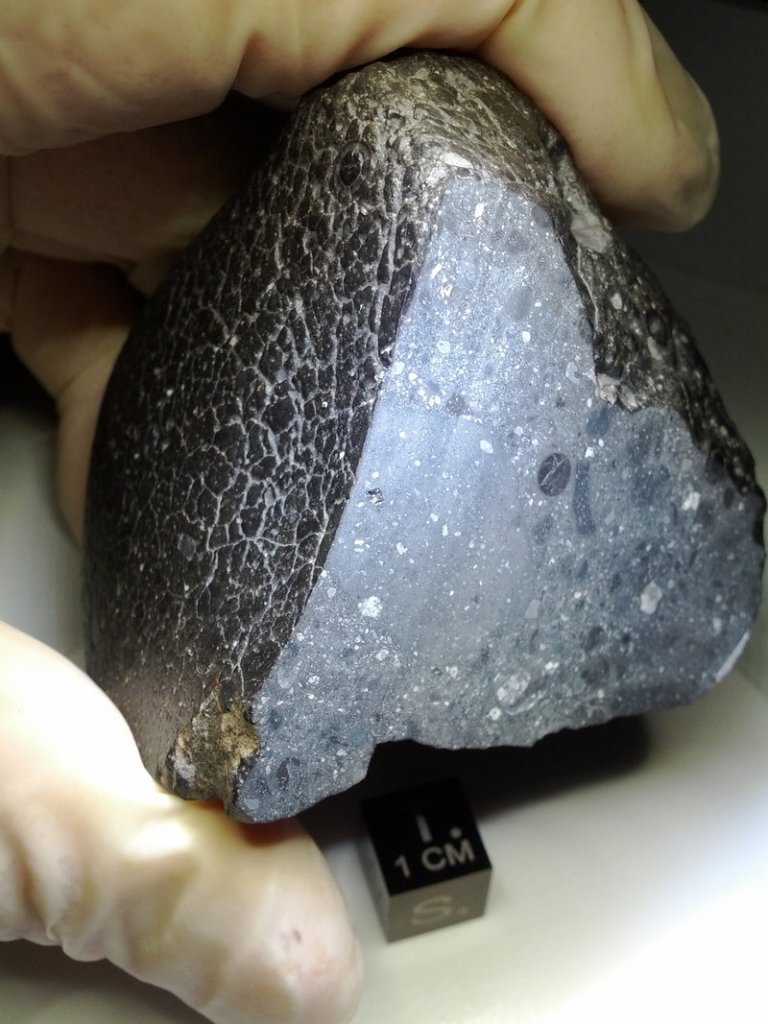LOS ANGELES – Scientists are abuzz about a coal-colored rock from Mars that landed in the Sahara desert: A yearlong analysis revealed it’s quite different from other Martian meteorites.
Not only is it older than most, it also contains more water, tests showed. The baseball-size meteorite, estimated to be 2 billion years old, is strikingly similar to the volcanic rocks examined on the Martian surface by the NASA rovers Spirit and Opportunity, which found water-bearing minerals.
“Here we have a piece of Mars that I can hold in my hands. That’s really exciting,” said Carl Agee, director of the Institute of Meteoritics and curator at the University of New Mexico who led the study published online Thursday in the journal Science.
Most space rocks that fall to Earth as meteorites come from the asteroid belt, but a number can be traced to the moon and Mars.
Scientists believe an asteroid or some other large object struck Mars, dislodging rocks and sending them into space. Occasionally, some plummet through Earth’s atmosphere.
Short of sending a spacecraft or astronaut to the red planet to haul back rocks, Martian meteorites are the next best thing for scientists seeking to better understand how Earth’s neighbor transformed from a tropical environment to a frigid desert.
About 65 Martian rocks have been recovered on Earth, mostly in Antarctica or the Sahara. The oldest dates back 4.5 billion years to a time when Mars was warmer and wetter. About half a dozen Martian meteorites are 1.3 billion years old and the rest are 600 million years or younger.
The latest meteorite NWA 7034 — nicknamed “Black Beauty” — was donated to the University of New Mexico by an American who bought it from a Moroccan meteorite dealer last year.
Researchers performed a battery of tests on the meteorite and based on its chemical signature confirmed that it was blasted to Earth from Mars. At 2.1 billion years old, it’s the second-oldest known Martian meteorite that formed from a volcanic eruption.
There’s also evidence that it was altered by water. Though the amount released during heating was small — 6,000 parts per million — it was still much more than other Martian meteorites. Scientists said this suggested there was interaction with water near the surface during a time when the planet was mostly dry and dusty.
More tests are under way to determine how long the rock floated in space and how long it had been sitting in the Sahara.
University of Alberta meteorite expert Chris Herd said the find was welcome since most Martian rocks that rain on Earth tend to be younger. And the latest find does not appear to be too contaminated, he said.
“It’s fairly fresh. It hasn’t been subjected to a whole lot of weathering,” said Herd, who had no role in the research.
Copy the Story Link
Send questions/comments to the editors.



Success. Please wait for the page to reload. If the page does not reload within 5 seconds, please refresh the page.
Enter your email and password to access comments.
Hi, to comment on stories you must . This profile is in addition to your subscription and website login.
Already have a commenting profile? .
Invalid username/password.
Please check your email to confirm and complete your registration.
Only subscribers are eligible to post comments. Please subscribe or login first for digital access. Here’s why.
Use the form below to reset your password. When you've submitted your account email, we will send an email with a reset code.